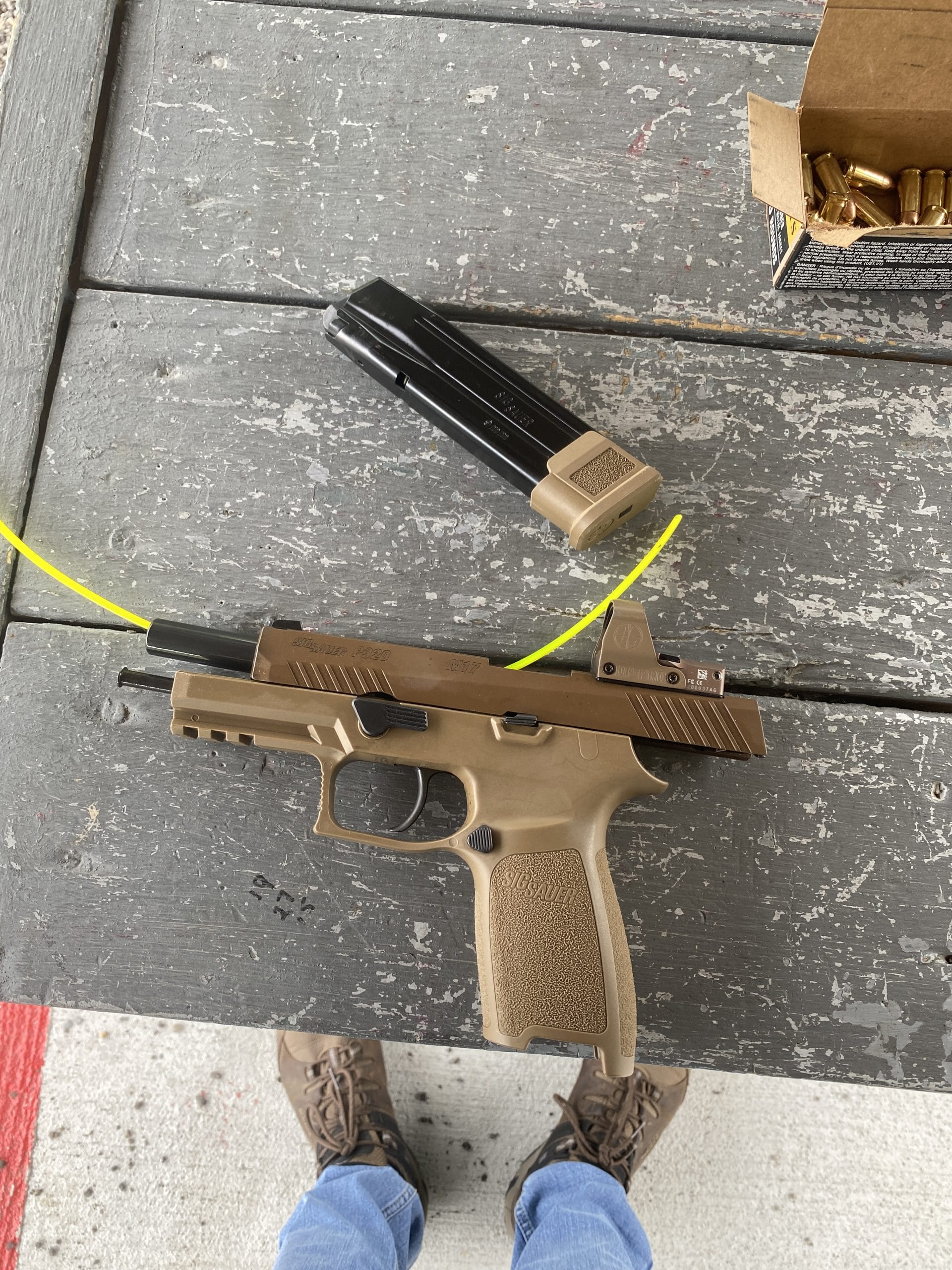
Categories:
Before considering carrying a concealed weapon, it is essential to have a comprehensive understanding of the laws and regulations that govern this practice. Carrying a concealed gun is a significant responsibility that requires adherence to specific guidelines to ensure the safety of both the carrier and those around them. Below are key points to consider when familiarizing yourself with concealed carry laws:
1. State-specific regulations: Concealed carry laws vary from state to state, so it is crucial to research and understand the specific rules in your jurisdiction. This includes knowing whether your state issues permits, what requirements must be met for obtaining one, and which locations are off-limits for carrying guns. 2. Reciprocity agreements: Many states have reciprocity agreements with others, allowing individuals with valid permits from one state to carry their concealed weapon in another participating state.
Understanding these agreements can help determine where you can legally carry your gun when traveling across state lines. 3. Prohibited areas: Various locations such as schools, government buildings, airports, or private property may prohibit guns even if you possess a valid permit. Familiarize yourself with these restricted areas to avoid potential legal consequences. 4. Duty to inform: Some states require individuals carrying concealed weapons to inform law enforcement officers during encounters or traffic stops.
Being aware of your duty-to-inform obligations helps prevent misunderstandings and ensures compliance with the law. 5. Ongoing training and education: Responsible gun owners should continuously seek opportunities for training and education on gun safety practices and self-defense techniques specific to concealed carry situations.
When it comes to concealed carry, selecting the right gun is of utmost importance. Each individual has unique preferences and needs, so finding a gun that suits you personally is crucial for ensuring both safety and comfort. Here are some key factors to consider when choosing a gun for concealed carry. Firstly, size matters. The size of the handgun directly affects its ease of concealment and comfort during everyday carry.
Generally, compact or subcompact guns are preferred due to their smaller dimensions and reduced weight, allowing for more discreet concealment while minimizing printing or visibility through clothing. Next, caliber selection should be carefully considered. While larger calibers offer more stopping power, they also tend to generate greater recoil, which can affect accuracy during rapid fire. It is essential to strike a balance between stopping power and manageable recoil based on your shooting proficiency and comfort level.
Another vital aspect is the gun’s reliability. Opting for well-known brands with a proven track record in terms of reliability can significantly enhance your peace of mind knowing that your weapon will function consistently when needed most. Ergonomics play a significant role in selecting the right gun as well. The grip should fit comfortably in your hand, allowing you to maintain control while shooting accurately under various conditions.
Additionally, consider features like ambidextrous controls if you are left-handed or have plans for training with both hands. Lastly, proper training and practice cannot be emphasized enough. Familiarize yourself with different guns by seeking professional instruction at a reputable shooting range before making any purchase decisions.
One of the most critical aspects of carrying a concealed gun is ensuring that it is properly holstered and securely stored. Failing to do so can lead to accidental discharge, injury, or even loss of control over your weapon. Here are some essential safety tips for holstering and securing your gun effectively. Firstly, always invest in a high-quality holster designed specifically for your gun.
A proper holster should cover the trigger guard completely, preventing any accidental contact that could cause an unintended discharge. It should also retain the gun securely so that it cannot be easily dislodged or fall out during movement. When inserting your gun into the holster, ensure that you maintain proper trigger finger discipline. Keep your finger off the trigger until you are ready to draw and fire.
This practice minimizes the risk of unintentional firing while holstering or adjusting your weapon. Additionally, make sure to choose a carry position that is comfortable and allows for easy accessibility without compromising safety. Experiment with different positions to find what works best for you while keeping in mind factors such as concealment, comfort, and ease of drawing. Regularly inspect your holster for any signs of wear or damage.
Ensure that screws or retention devices remain tight and functional to prevent accidental dislodging of the gun during daily activities. Lastly, remember that practice makes perfect when it comes to safely drawing and reholstering your weapon. Regular training sessions will help develop muscle memory and ensure smooth handling while maintaining proper safety protocols.
Obtaining a concealed carry permit is an important step towards personal safety, but it is equally vital to undergo effective training and practice regularly to ensure proficiency with your gun. Adequate training not only enhances your shooting skills but also helps you develop the necessary mindset and decision-making abilities when faced with a potentially dangerous situation. Here are some key aspects to consider for effective concealed carry training.
Firstly, seek professional instruction from certified guns trainers who specialize in concealed carry techniques. These experts can provide valuable insights into proper gun handling, marksmanship fundamentals, and legal considerations specific to carrying a concealed weapon. They can also offer personalized guidance tailored to your needs and skill level. Live-fire exercises at a range are indispensable for developing accuracy, control, and muscle memory.
Regularly practicing drawing from concealment, firing accurately under simulated stress, and reloading efficiently will improve your overall performance in high-pressure situations. Additionally, incorporating scenario-based training – where you react to various real-life scenarios – can help develop situational awareness and decision-making skills. Furthermore, supplementing live-fire practice with dry-fire drills at home can be immensely beneficial. Dry-firing involves safely practicing gun manipulation without live ammunition – focusing on trigger control, sight alignment, and target acquisition.
It allows you to refine your technique without the expense or noise of live rounds while reinforcing safe gun handling habits. Lastly, stay up-to-date with changes in laws regarding concealed carry permits as well as self-defense regulations in your jurisdiction. Being knowledgeable about legal constraints will help ensure you carry responsibly while minimizing potential legal complications.
When it comes to personal safety, one of the most important factors to consider is situational awareness. Being aware of your surroundings and understanding potential threats can greatly help in avoiding dangerous encounters. This is especially crucial for individuals who practice concealed carry, as they bear the added responsibility of carrying a gun. Situational awareness involves actively observing and analyzing your environment, including people, objects, and activities happening around you.
It allows you to identify potential risks or suspicious behavior before it escalates into a dangerous situation. By mastering situational awareness techniques, you can make informed decisions that prioritize your safety. To enhance your situational awareness skills, start by maintaining a high level of attentiveness at all times. Avoid distractions such as excessive use of electronic devices or being lost in thought while walking in public spaces.
Instead, focus on what is happening around you and be mindful of any unusual or out-of-place behaviors. Another essential aspect is understanding the concept of pre-attack indicators. These are subtle cues that individuals may exhibit before engaging in harmful actions. Some common indicators include aggressive body language, intense staring or scanning movements, or sudden changes in behavior patterns. By recognizing these signs early on, you can take appropriate measures to distance yourself from potential threats and seek assistance if necessary.
It is also crucial to trust your instincts when it comes to personal safety. If something feels off or raises suspicion within you about a certain situation or individual’s behavior, listen to that internal voice and take appropriate action like changing routes or seeking help from authorities.
When it comes to concealed carry safety, responsible storage and easy access to guns at home are of utmost importance. Properly securing guns not only prevents unauthorized access but also reduces the risk of accidents. Here are some key considerations for safe storage and access:
1. Invest in a quality gun safe: Purchase a robust, tamper-resistant gun safe that meets your specific needs. Ensure it is fireproof, waterproof, and securely bolted to the floor or wall to prevent theft or unauthorized access. 2. Keep guns unloaded when not in use: Store guns unloaded with ammunition stored separately, ensuring an added layer of safety. 3. Utilize trigger locks or cable locks: These inexpensive accessories can prevent accidental discharges by rendering the gun inoperable when not in use.
4. Educate family members: Teach household members about gun safety protocols and ensure they understand the seriousness of handling guns responsibly. Discuss the potential dangers associated with guns and establish clear rules regarding access. 5. Consider quick-access options: In situations where immediate accessibility is necessary, explore alternatives such as biometric safes or lockboxes with digital keypads that allow authorized users quick entry while still providing security against unauthorized individuals.
6. Regularly inspect your storage system: Periodically check your gun safe for any signs of wear or damage that may compromise its security features. Additionally, ensure that all locking mechanisms are functioning properly.
When it comes to concealed carry, it is not just about owning a gun and being aware of its operation; it requires developing a responsible mindset that prioritizes safety above all else. Understanding the importance of this mindset is crucial for anyone considering carrying a concealed weapon. Here are some key factors to consider when developing a responsible carrying mindset. First and foremost, education is paramount.
Before even thinking about carrying a gun, individuals must undergo thorough training on guns safety and the laws surrounding concealed carry in their jurisdiction. This education should encompass not only the technical aspects of handling a weapon but also understanding when lethal force may be legally justified. Next, maintaining mental preparedness is essential. Responsible carriers should have an awareness of their surroundings at all times and be mentally prepared to assess potential threats quickly and accurately.
This includes recognizing potential danger signs, understanding crowd dynamics, and constantly evaluating the risk level of any given situation. Furthermore, adopting a non-confrontational attitude can significantly contribute to responsible carrying. Having good judgement regarding conflict avoidance is key; responsible carriers understand that avoiding potentially dangerous situations whenever possible is always the best course of action. Lastly, regular practice and self-evaluation are necessary for maintaining proficiency with your weapon.
Regular range sessions enable you to become familiar with your gun’s operation under controlled conditions, improving your accuracy and response time in high-pressure situations. In conclusion, developing a responsible carrying mindset involves continuous education, mental preparedness, conflict avoidance strategies, and regular practice with your weapon.
As a responsible concealed carrier, it is essential to understand how to effectively interact with law enforcement officials when carrying a concealed weapon. Maintaining open lines of communication and being prepared can help ensure your safety, as well as the safety of law enforcement officers. Here are some important tips to keep in mind:
1. Stay calm and follow instructions: If you are approached or stopped by law enforcement while carrying a concealed weapon, remain calm and comply with their instructions. Keep your hands visible at all times, preferably on the steering wheel or where they can be easily seen. 2. Inform the officer: It is crucial to disclose your status as a concealed carrier upfront during any encounter with law enforcement.
Clearly state that you have a valid concealed carry permit and are currently armed. 3. Do not reach for your weapon unless instructed: Avoid making any sudden movements towards your gun unless specifically instructed by the officer. Always ask for permission before reaching for identification documents or retrieving items from within your vehicle. 4. Follow local laws: Familiarize yourself with state and local laws regarding disclosure requirements and how to best cooperate during an interaction with law enforcement personnel while carrying concealed.
5. Avoid confrontations: It is vital to always maintain a respectful attitude towards law enforcement officers, even if you feel they may be acting improperly or misunderstand the situation. Remember, every interaction may differ depending on location and individual circumstances; thus, staying informed about local regulations is paramount for responsible concealed carriers.
Concealed carry permits grant individuals the right to protect themselves and others from potential harm. However, it is crucial to understand the legal implications and moral considerations associated with using lethal force in self-defense situations. This subtopic explores key factors that individuals should consider when determining if the use of lethal force is necessary. Firstly, it is essential to familiarize yourself with your state’s specific laws regarding self-defense.
Each jurisdiction may have different criteria for justifiable use of lethal force. Understanding these laws can help you make informed decisions and avoid legal consequences. Secondly, before resorting to lethal force, consider whether there are alternative options available. Could you escape or de-escalate the situation without causing harm? Using lethal force should always be a last resort when all other reasonable avenues have been exhausted.
Moreover, assessing the severity of the threat is crucial in determining if lethal force is warranted. It is vital to differentiate between a situation where your life or someone else’s life is genuinely at risk versus one where non-lethal means could suffice. Additionally, evaluating proportionality is essential for ethical decision-making. The level of threat faced must correspond reasonably with the level of force used in response.
Disproportionate use of deadly force may lead to legal consequences and moral dilemmas. Finally, always prioritize personal safety over material possessions when making split-second decisions. While protecting property can be important, it should never outweigh human life or personal well-being.
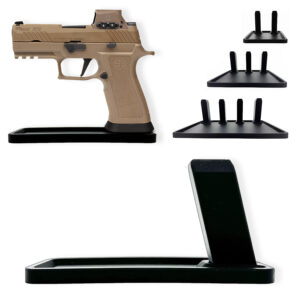
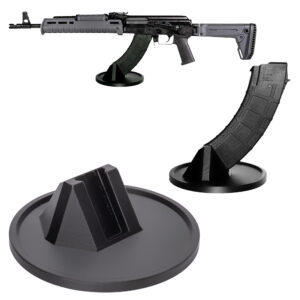


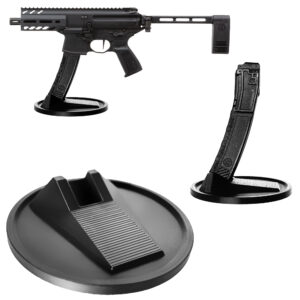
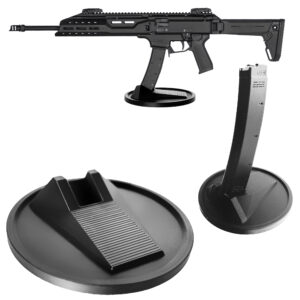
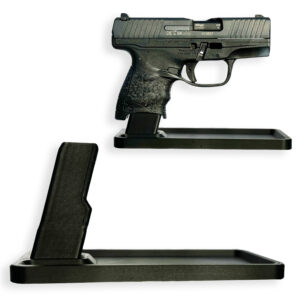

Colt
Colt M4 Carbine
Colt LE6920
Colt AR-15 A4
Daniel Defense
DDM4 V7
DDM4 V9
DDM4 V11
DDM4 ISR (Integrally Suppressed Rifle)
Smith & Wesson (S&W)
M&P15 Sport II
M&P15 Tactical
M&P15T
Bravo Company Manufacturing (BCM)
BCM Recce-16
BCM Recce-14
BCM MCMR Series
Aero Precision
M4E1 Series
AC-15
AR15 Pistol (Various Configurations)
Ruger
Ruger AR-556
Ruger SR-556
Ruger AR-556 MPR (Multi-Purpose Rifle)
Springfield Armory
Saint Victor
Saint Edge
Saint AR-15
PSA (Palmetto State Armory)
PSA PA-15
PSA AR-V
PSA Jakl (AR Pistol)
FN America
FN 15 Tactical Carbine
FN 15 Patrol
FN 15 DMR
Wilson Combat
Recon Tactical
Super Sniper
Protector Carbine
SIG Sauer
SIG M400 Tread
SIG M400 Elite
SIG M400 SDI
LWRC International
IC DI (Direct Impingement)
IC SPR
IC A5
Bushmaster Guns
XM-15 QRC
Bushmaster MOE
XM-15 Patrolman
Rock River Arms
LAR-15 Entry Tactical
LAR-15 Predator
LAR-15 Elite Comp
Stag Arms
Stag 15 Tactical
Stag 15L (Left-Handed Models)
Stag 15 Valkyrie
Noveske Rifleworks
Noveske Gen 4 N4
Noveske Space Invader (AR Pistol)
Noveske Recon
Anderson Manufacturing
AM-15 Optic Ready
AM-15 M4 Carbine
AM-15 Precision Rifle
Adams Arms
AA-15 Piston Rifle
P2 AARS (Adams Arms Rifle Series)
Black Rain Ordnance
SPEC15 Series
BRO Predator
Fallout 15
Diamondback Guns
DB15 Series
DB15CCMLB
DB15EB
Del-Ton Inc.
DTI-15
Del-Ton Echo 316H
Sierra 316M
Windham Weaponry
Windham SRC
Windham VEX-SS
Windham RMCS-4 (Caliber Conversion System)
Christensen Arms
CA-15 G2
CA-15 Recon
CA-15 Titanium Edition
Patriot Ordnance Factory (POF-USA)
Renegade Plus
P415 Edge
Revolution DI
LaRue Tactical
PredatAR
OBR (Optimized Battle Rifle)
LaRue Stealth 2.0
Battle Arms Development
Workhorse Patrol Carbine
BAD556-LW (Lightweight)
Authority Elite Rifle
Faxon Guns
Ascent AR-15
FX-19 (AR Pistol)
Streamline Ultralight Series
KE Arms
KE-15 SLT (Super Lightweight Tactical)
KE-15 Scout Carbine
Primary Weapons Systems (PWS)
MK1 MOD 2-M
MK116 PRO
MK107 (Piston AR Pistol)
ZEV Technologies
ZEV Core Elite Rifle
ZEV AR15 Billet Rifles
Franklin Armory
BFSIII AR-C1
Militia Model
F17-L (Chambered in .17 WSM)
Seekins Precision
SP15 DMR
NX15 Skeletonized Rifle
Havak Bravo
Aero Precision (Additional Models)
EPC-9 (Pistol Caliber ARs)
VG6 AR Rifles
Barrett Guns
REC7 DI
REC7 Gen II
CMMG
MK4 RCE
Resolute 300
Banshee (AR Pistol)
DPMS Panther Arms
Panther Oracle
Panther LR-308
H&K (Heckler & Koch)
HK MR556A1
HK416 (Military Variant)
Rock Island Armory (Armscor)
VR-80 Tactical AR (Shotgun AR Platform)
Troy Industries
Troy SPC-A3
Troy PAR (Pump Action AR)
Wilson Tactical
Tactical Recon AR
Protector Series
F1 Guns
FDR-15 Skeletonized Rifle
BDRx-15 Series
Juggernaut Tactical
JT-15
JT-10 Precision Rifle
AeroSurplus
Surplus AR-15 Rifles (Budget Models)
Thunder Tactical
AR-15 Basic Carbine
Tactical Builder Sets
Radical Guns
RF-15
Forged AR-Series
Dark Storm Industries
DS-15 Featureless Rifles
DS-10 Typhoon
DRD Tactical
Paratus
Aptus AR Rifles
Bear Creek Arsenal
BCA-15
AR Complete Upper Builds
Aero Survival Rifles (ASI)
ASR Tactical Series
Tactical Edge
WARFIGHTER Series
AR-15 Lightweight Rifles
Lone Star Armory
TX15 DMR
TX15 Carbine
HERA Arms
HERA H7
HERA AR-15 Lower Builds
IWI (Israeli Weapon Industries)
Zion-15
DRD Tactical
Tactical Modular Rifles
Quick-Takedown Rifles
V Seven Weapons
1776 Rifle
Hyperlite Rifle
Core Rifle Systems
Core15 Tac III
Core15 Patrol Rifle
Armalite (Original AR-15 Creator)
M15 Tactical
M15 A4 Carbine
DEF15 (Defensive Sporting Rifle Series)
PSA (Palmetto State Armory Additional Models)
PSAK-47 Hybrid (AR-AK Style Hybrid)
PSA Dagger (Pistol Caliber Configurations)
Odin Works
OTR-15
Odin Recon Rifle
Maxim Defense
MDX-508 PDX (Compact AR Pistol)
MDX-510 Rifle